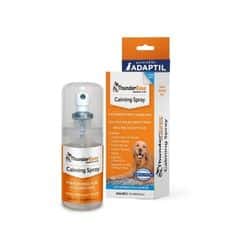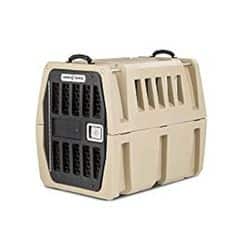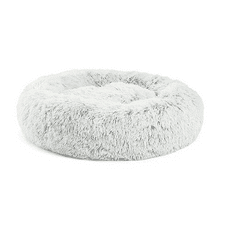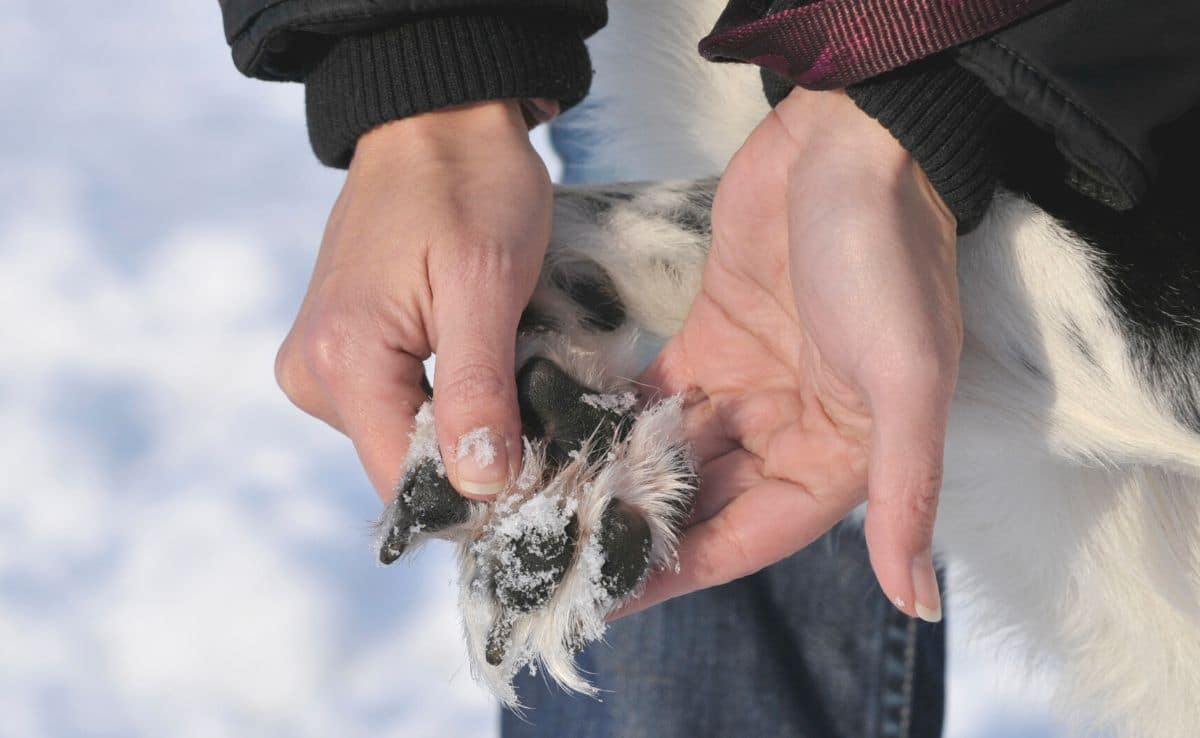Is Your Dog Freaking Out? Here’s How To Calm Them Instantly!
When you purchase through links on our site, we may earn a commission. Here’s how it works.
Is your dog pacing, panting, or downright losing it? Whether it’s fireworks, vet visits, or just a random Tuesday, a stressed-out pup can quickly turn your peaceful home into chaos. You’re not alone, and yes, there are simple, science-backed ways to bring the calm.
Table of Contents
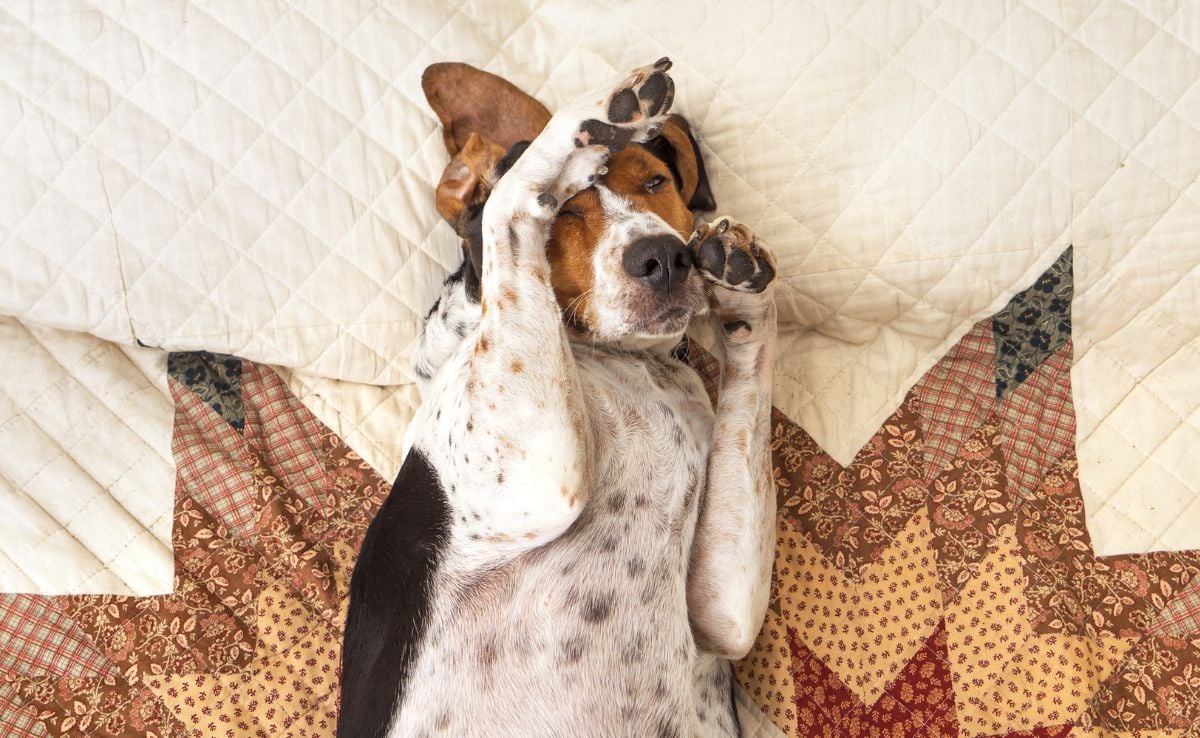
In this guide, I dive into exactly how to calm a dog down instantly, whether they’re anxious, hyper, aggressive, or just wound up like a tornado. From expert-approved tips to vet-recommended products, you’ll get the real-world tools that actually work (and no, it’s not just a fancy dog bed). So, stick around, because by the end of this, you’ll know exactly how to bring peace back to your pup and your home.
Understanding Dog Anxiety: Signs You Shouldn’t Ignore
If your dog seems constantly on edge, it’s not just “bad behavior”. It could be anxiety. Just like humans, dogs can experience real, debilitating stress. Canine anxiety often shows up in ways owners dismiss as stubbornness or excitement.
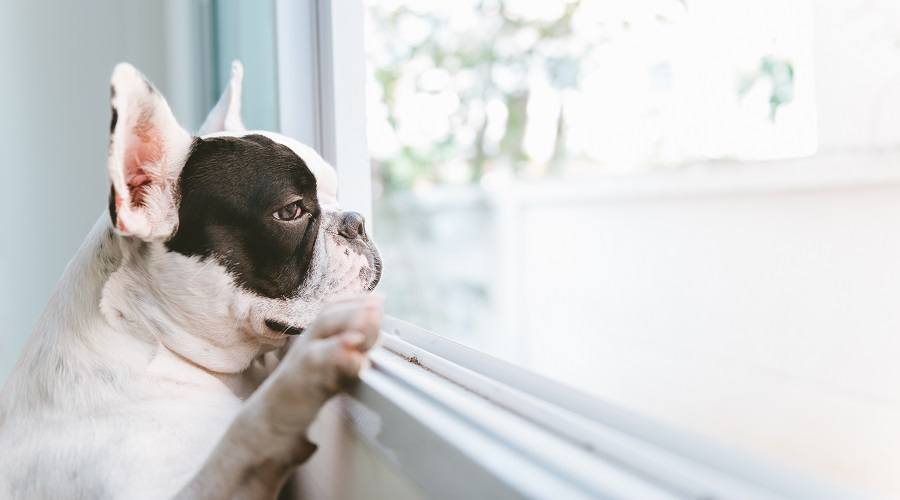
Common signs of dog anxiety include:
- Excessive panting or drooling (even when it’s not hot)
- Pacing or restlessness
- Whining, barking, or howling when left alone
- Destructive behavior (like chewing furniture or digging)
- Sudden aggression or cowering
- Accidents in the house, despite being house-trained
- Shaking or hiding during thunderstorms or fireworks
These behaviors aren’t just sad and frustrating, they’re your dog’s way of saying, “I’m overwhelmed” or “something’s not right”.
According to research, chronic anxiety can lead to long-term health issues and increase the chances of multiple cancers if left untreated. That’s why recognizing the early signs matters. When you know what to look for, you can act quickly and help your dog feel safe, secure, and loved.
Bottom line: If your dog is acting out of character, don’t brush it off. Anxiety is real, it’s treatable, and in the next section, I’ll show you how to calm your dog down fast and share methods backed by experts and proven in real homes.
Up next, I dig into what’s actually going on inside your dog’s brain during moments of anxiety. Plus, why calming them down starts with understanding the science.
The Science Behind Dog Anxiety: What’s Really Happening In Their Brain
Ever wonder why your dog reacts the way they do when they’re anxious? There’s a lot more going on beneath the surface than just nerves or restlessness.
Researchers at Ghent University, along with various other studies, have found that at the root of dog anxiety is the amygdala. This is a part of the brain that handles fear responses. When your dog perceives a threat (real or imagined), their body floods with stress hormones like cortisol and adrenaline, just like ours.
Their heart rate rises, muscles tense, and they enter “fight, flight, or freeze” mode. That’s why your dog might bark uncontrollably, pace nonstop, or hide in a corner. They’re trying to survive what their brain thinks is danger.

But here’s the kicker: dogs don’t always know the threat is gone. Their heightened senses and memory can keep them in that anxious state long after the trigger has passed.
What Causes The Reaction?
While every dog is unique, anxiety is often triggered by a handful of common stressors that activate their internal alarm system.
Common triggers include:
- Loud noises (fireworks, thunder)
- Separation from their owner
- New environments or people
- Past trauma or abuse
- Changes in routine
Over time, repeated exposure without support can lead to generalized anxiety, where your dog stays in a chronic stress state. This is why early intervention matters, and why calming them isn’t just about comfort, it’s about brain health.
The Takeaway: Understanding the biology behind your dog’s behavior helps you respond with compassion instead of frustration. And when you respond correctly, you’re not just calming symptoms, you’re helping to rewire their response to stress.
Next, I look at how your own emotions might be influencing your dog’s anxiety, sometimes without you even realizing it.
How Your Emotions Affect Your Dog’s Anxiety
Think your dog doesn’t notice when you’re stressed? Think again. Dogs are incredibly tuned into their humans, and your emotional state can directly influence theirs.
In fact, multiple studies, including one by Sweden’s Linköping University, have shown that dogs mirror their owners’ stress levels. They often pick up on subtle cues like your tone of voice, body language, and even scent. If you’re anxious, tense, frustrated, or have a faster heart rate, your dog might assume something’s wrong and go into stress mode themselves.
Ever found your dog pacing when you’re rushing around the house? Or hiding when you’re upset? That’s not a coincidence; it’s emotional contagion that runs deep.
How It Happens
Here are a few key ways your stress can silently transfer to your dog, without a single word spoken:
- Your body releases cortisol when you’re stressed, and dogs can literally smell that change.
- Raised voices or erratic behavior send “danger” signals to dogs, even if you’re not upset with them.
- Dogs thrive on routine and calm energy. When that changes, their sense of safety takes a hit.
The good news? It works both ways. When you’re calm and centered, your dog picks up on that, too. Simple things like mindful breathing, soft speech, and slowing your movements can help reassure your pup that everything’s okay, even in high-stress moments.
So, before you dive into calming techniques for your dog, take a second to check in with yourself. Your vibe is contagious, and for better or worse, your dog is catching it.
Up next, let’s get into specific calming methods that work fast, even during meltdowns.
7 Daily Habits To Reduce Stress In Dogs Long-Term
Calming your dog in the moment is powerful. But what about preventing anxiety before it starts? That’s where the real magic happens. Dogs thrive on consistency, and when you build small, supportive habits into their day, you create an environment where they feel safe, confident, and in control.
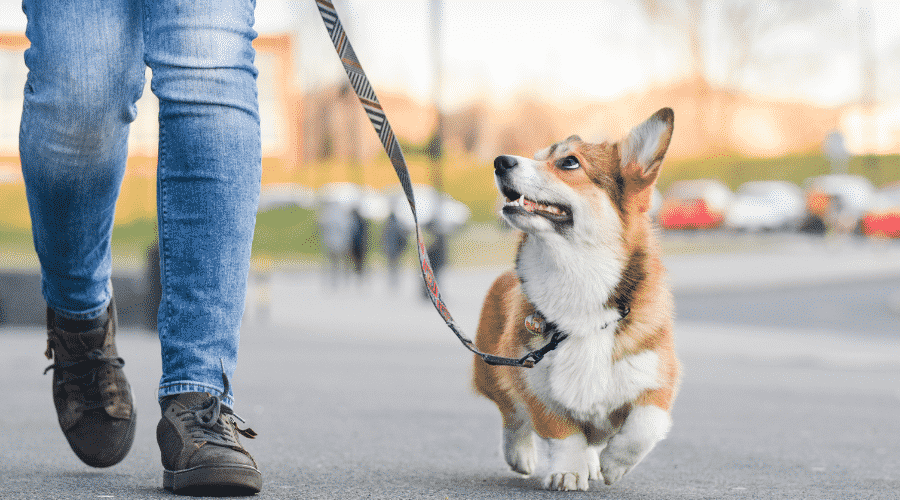
These habits don’t require expensive gear or professional training, just intentional time, structure, and love.
1. Stick To A Routine
Dogs are creatures of habit. Waking, walking, and bedtime routines create a sense of predictability that helps reduce uncertainty (a major trigger for anxiety). It also includes food and grooming. Ensure you order plenty of food beforehand so you don’t need to run to the store last minute. I recommend auto-ship dog food like The Farmer’s Dog to ensure your dog gets a feast of their own!
2. Prioritize Regular Exercise
A tired dog is a calmer dog, both physically and emotionally. Regular movement helps burn off excess energy and lowers cortisol levels, naturally reducing anxiety. Whether it’s a long walk, a game of fetch, or some off-leash play, daily exercise provides structure, stimulation, and an outlet for stress. Even 30 minutes daily can make a huge difference. Especially for high-energy breeds or dogs prone to nervous behaviors like barking, pacing, or chewing.
3. Add Enrichment Activities
Mental exercise is just as important as physical movement. Puzzle toys, snuffle mats, and slow feeders engage your dog’s brain, keeping them busy and content. Even a short 10-minute training session or teaching a new trick can redirect nervous energy and boost their confidence. Interactive dog toys are great for enrichment activities.
4. Create A Safe Space
Every dog should have a “home base”. A quiet, cozy spot they associate with safety and calm. Whether it’s a crate with a blanket, a corner with their bed, or a whole room, this space should always be available when your dog needs to decompress. It’s not punishment, it’s peace. This might mean limiting visitors, at least for a while. If this seems aggravating for them, there is no need for competitive stress in their home.
5. Practice “Calm Reinforcement”
We often reward dogs when they’re excited, but the real magic happens when you start reinforcing calm behavior. Give praise, treats, or gentle petting when your dog is relaxed or lying quietly. Over time, they’ll begin offering that behavior more often because they know it gets your attention.
6. Touch Base Often (Especially For Velcro Dogs)
Some dogs are more independent, but others, especially those with separation anxiety, just need reassurance. Quick check-ins throughout the day, soft eye contact, or a belly rub during a work break can help them feel secure. These micro-connections go a long way in building emotional stability.
7. Limit Disruptive Travel & Plan Ahead When You Can’t
Frequent changes in environment or long absences can trigger anxiety in dogs, especially those who are sensitive to separation or routine shifts. Limit how often you travel or leave your dog for extended periods if possible. When travel is unavoidable, set your pup up for success. Hire a trusted pet sitter, arrange regular walks, or ask someone familiar to check in. Keeping their world as stable as possible while you’re away helps reduce stress and prevent regression in their behavior.
Bottom Line: Consistency builds trust, and trust reduces stress. The more your dog learns they can count on you and their environment, the less reactive and anxious they become.
Next, I dive into specific anxiety triggers, from thunderstorms to vet visits, and how to calm your dog during each one.
Calming Dogs During Specific Events
Even the most well-adjusted dogs can spiral into panic during high-stress situations. Specific triggers can send your dog into overdrive, whether it’s booming thunder, a trip to the vet, or being left alone for the first time in weeks. The key isn’t just to react, it’s to prepare. Here’s how to help your dog stay grounded during some of the most common anxiety-inducing events.
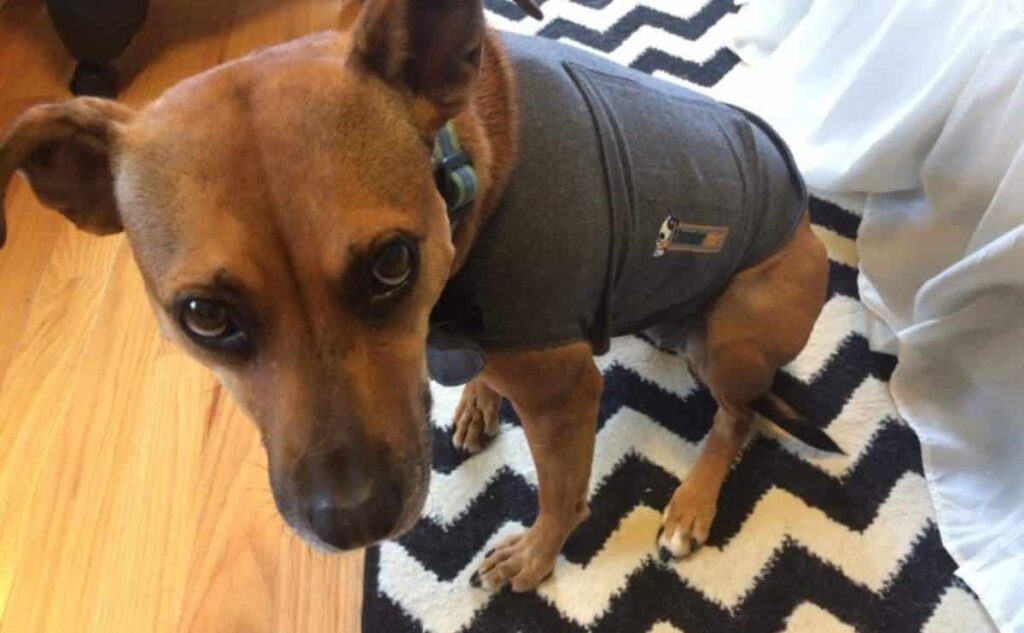
During Thunderstorms Or Fireworks
Loud, unpredictable noises are a nightmare for many dogs. In fact, noise phobia is one of the most common forms of canine anxiety.
A study in the Journal of the American Animal Hospital Association found that certain dog breeds, especially working and sporting types like German Shepherds, Collies, and Hounds, are more likely to develop storm phobias. These breeds tend to be highly alert and sensitive by nature, which may explain their stronger reaction to loud, unpredictable sounds like thunder.
What to do:
- Avoid scolding fearful behavior; instead, comfort with calm presence.
- Create a “storm shelter” with blankets in a quiet room or crate.
- Use white noise machines or calming music to mask the sound.
- Try a calming wrap or a ThunderShirt to provide gentle pressure.
- For some dogs, noise-cancelling headphones calm them down instantly.
During Vet Visits
Even dogs that seem chill at home can panic in the exam room. The unfamiliar smells, bright lights, and physical handling can be a lot.
What to do:
- Take practice trips to the vet just to sit in the lobby and leave.
- Use high-value treats to associate the vet with good experiences.
- Bring a favorite toy or blanket for familiarity.
- Stay calm. Remember, your dog feeds off your energy.
When Left Home Alone
Separation anxiety can trigger barking, destructive behavior, or even physical symptoms. It’s fear, not misbehavior.
What to do:
- Start with short departures and gradually increase time away.
- Leave a worn shirt or something with your scent behind.
- Use food-dispensing toys, like a Kong, or puzzles to keep them busy.
- Hire a dog walker or pet sitter if you’ll be gone for extended periods.
Playing calming music can be surprisingly effective for easing dog anxiety, especially when your pup is home alone. This popular video claims to have helped over 4 million dogs worldwide. Based on the soothing tones and feedback from other pet parents, it’s worth a try the next time your dog seems on edge.
During Travel or New Environments
Traveling can be a sensory overload for dogs, with new smells, sounds, and routines all at once.
What to do:
- Keep their feeding and walking routines as consistent as possible.
- Bring familiar items from home, like toys or bedding.
- Give them time to explore the space at their own pace.
- Avoid overwhelming situations (crowded places, noisy areas) during the adjustment phase.
Bottom Line: While you can’t shield your dog from every stressor, you can set them up for success with preparation and empathy.
Next, I break down the top vet-recommended products that can give your dog a calming boost when needed.
Top 6 Products To Calm Your Dog
When training, routines, and environmental tweaks aren’t quite enough, the right calming product can make a huge difference. These options are designed to support your dog’s nervous system safely, and in many cases, give you results you can actually see. Some of our team swear by them, so I’ll share our personal experiences, too.
1. ThunderEase Calming Dog Spray Review
From the creators of the ThunderShirt, this ThunderEase Calming Spray helps put your pup at ease with the natural scent of a mother’s nursing pheromones. It’s an all-natural and drug-free solution to reducing anxiety. Studies show it is 90% effective and doesn’t require training. Just spritz 8-10 pumps when you anticipate your dog may get nervous, and watch the stress decrease.
Toss a bottle in your bag to take on the go. And if it doesn’t work, the company stands by its product with a 100% money-back guarantee. In addition to spray, you can also buy this technology as a diffuser kit, a dog collar, or in the ThunderShirt itself. Have cats? There is also a formula for felines.
I have been using ThunderEase pheromones to calm my dog Lily since she was diagnosed with dementia a year ago. It calms her down when she goes to the area of our home where we have her calm combo: pheromones and her cozy bed together in one safe place.
Pricing
2. CBD Oil For Dogs
CBD oil is another safe, organic alternative to traditional medicine for anxious dogs. Note that CBD oil contains less than 0.3% THC (the substance in marijuana that produces a “high”). CBD oil is growing in popularity for pups and is recommended by many vets for its naturally calming effects. It can help treat chronic or temporary conditions from which your furry friend may suffer, including stress.
One of our top picks is HolistaPet. They make a number of CBD products in the USA including oils, treats, balms, and soothing sprays from naturally occurring Phytocannabinoid-rich (PCR) broad-spectrum oil. Like ThunderEase, the company has a 30-day money-back guarantee that its products work. So give it a shot, you have nothing to lose other than your pup’s worries.
Our Personal Experience Using CBD Oil To Calm Our Dog Down
We tested CBD oil with our pup, Tiny, who struggles with anxiety during loud noises, car rides, and vet visits. We started with a very low dose to monitor for side effects, gradually increasing to the recommended amount. Once we hit the ideal dosage, the difference was clear. Tiny seemed noticeably calmer and more grounded in situations that normally sent him into a panic.
This summer’s frequent thunderstorms have been a real test. We began giving him CBD oil about 45 minutes before storms were expected, and while he still notices the noise, he no longer trembles or hides. Instead of retreating to his usual storm shelter, he sits next to us, visibly more relaxed. We’ve also seen improvements in his tolerance for car rides, which used to trigger severe nervousness. Knowing we can ease his anxiety with a natural, vet-recommended supplement gives us real peace of mind.
– Sally Jones, Dog Parent & Writing and Editing For Canine Journal
Read our reviews of the best CBD oils and best CBD treats to learn about the medical properties, how it’s made, and application tips.
3. Groomit Dog In-Home Grooming App Review
If you live in a handful of major metro cities, the Groomit dog grooming app can help you find a local, reputable groomer in the comfort of your home. Simply download the app or go to the website, select the services (bathing, nail trim, haircuts, etc.), and book an appointment. Then you will connect with a certified groomer to come to your home for a doggy spa treatment.
It’s convenient for pet parents, and in-home grooming gives your dog a less stressful environment without exposure to other animals, diseases, or parasites. Your dog will also love the personal one-on-one care and attention. All groomers are fully insured, so you can ensure that safety is a top priority. You can also add fragrances, flea and tick removal/prevention, and more. They are expanding to more locations, and there’s a chance they’ll be in your area soon!
Use promo code CWQKYJ for a discount.
4. Gunner Kennels G1 Travel Crate Review
While you and the kiddos are buckled up, it’s crucial to prioritize your dog’s safety. Gunner Kennels are designed to create an inviting and secure “den” for your pup while traveling. Its unique construction and durable double-walls stand up to weather. Plus, it is 5-star crash-tested with two layers providing shock protection.
The escape-proof door has a locking latch that is custom-welded and reinforced with aluminum, so your pup can’t open the door from inside. This sturdy construction also provides extra protection from a dog chewing its way out. This crate has superior ventilation while also providing shelter and temperature control. Your pup deserves the best transport available, and Gunner stands by its product with a lifetime warranty.
Pricing
- Starts from $600
5. Calming Dog Beds
Believe it or not, getting the right bed for your pup can also make a huge difference. You have a lot of choices for dog beds that can help soothe your pup to sleep or just hang out when they’re feeling insecure. Our calming dog bed reviews give you some of the top-rated products to help your pup feel at ease.
Our Personal Experience With Calming Dog Beds
I have two dogs, Bonkers, a medium-sized Bull Terrier mix, and Chips, a small Doxie. I recently upgraded their bedding to the Best Friends by Sheri calming dog bed, opting for the long shag fur version. Bonkers is older and tends to be a little more anxious, and he’s always gravitated toward softer textures, so this felt like the perfect fit.
I chose the larger size so both dogs could curl up together, which is part of their nightly routine. The bed itself is incredibly plush, with thick fiber filling that’s held up impressively over six months – no flattening or sagging. The removable cover makes cleaning a breeze, and it fits perfectly into our existing plastic dog bed frame.
What really convinced me this bed was helping? Bonkers now chooses it over snuggling with me on the couch. For a dog with anxiety, that kind of comfort speaks volumes.
– Emma Braby, Rescue Dog Mom & Writer For Canine Journal
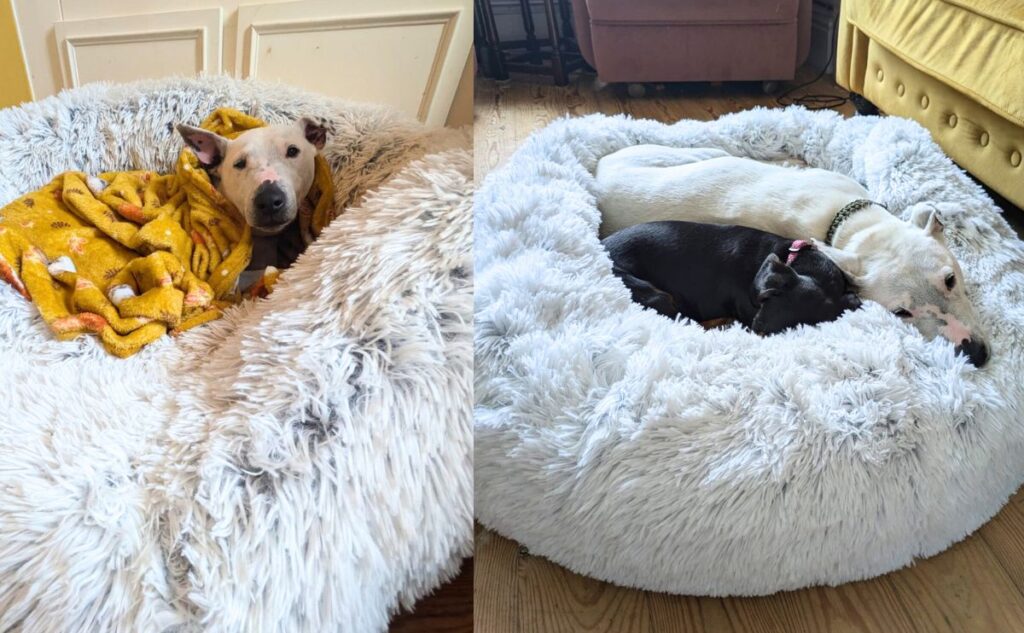
6. Natural Supplements & Calming Chews
From L-theanine to chamomile and melatonin, many calming chews offer a natural approach to managing stress. These can be great for daily use or as-needed situations, especially when paired with behavioral training. We have a guide on the best calming treats for dogs that are just as anxiety-soothing as they are tasty! Whatever product you choose, ensure it’s vet-formulated and free from fillers or artificial additives.
Our Personal Experience Giving Natural Supplements For Dog Anxiety
I work at a health food store that also caters to canines, and one of our consistent bestsellers for anxious dogs is Bach’s Rescue Remedy for Pets.
It’s a gentle blend of flower essences designed to help with everyday stress triggers like separation anxiety, loud noises, travel, and general nervousness. We’ve had so many repeat customers come back specifically for this. It’s one of those remedies people swear by when nothing else seems to take the edge off their pup’s stress.
– Tara Maurer, Dog Parent & Writer For Canine Journal
Final Verdict: Every dog is different, so finding the right product may take a bit of trial and error. But once you do, it can be a game-changer.
Coming up, I’ll explain when the right time to introduce a canine behaviorist is.
When To Seek Help: Understanding When Your Dog Needs A Professional
Not all anxiety can be solved with calming beds, CBD oil, or long walks. If your dog’s stress feels chronic, intense, or disruptive to daily life, it may be time to bring in a professional. Seeking help isn’t a last resort; it’s a sign that you care deeply about your dog’s well-being.
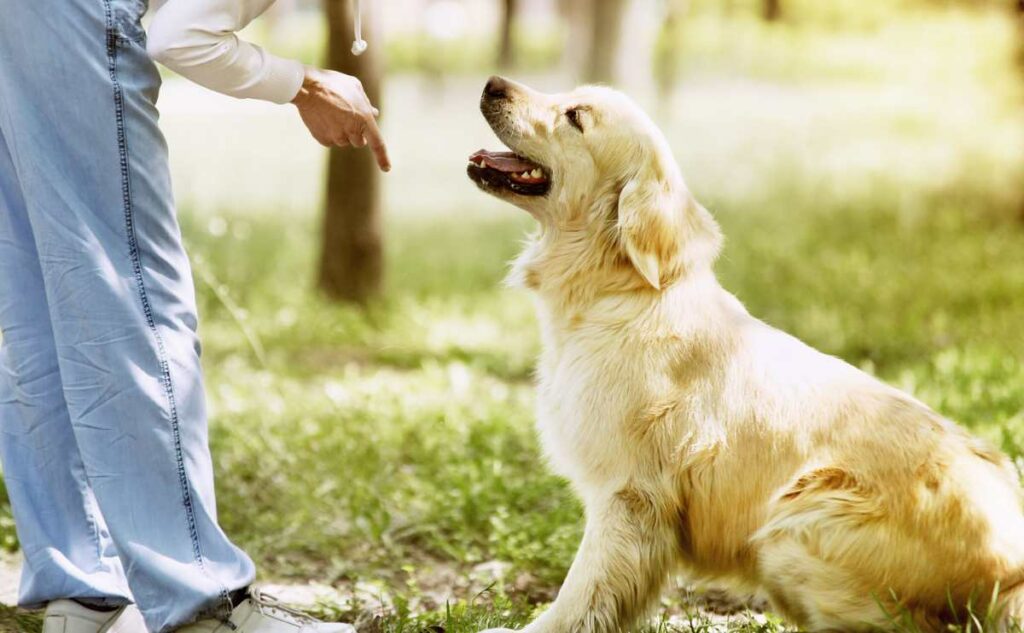
Signs It’s Time To Call A Vet Or Behaviorist
If you’re noticing any of the following signs, it’s a strong indication that your dog may need professional evaluation and support:
- Anxiety and stress are escalating, despite trying home-based strategies
- Your dog shows aggression toward people or other pets when anxious
- They harm themselves (excessive licking, chewing, or head pressing)
- Daily life is disrupted with constant barking, indoor accidents, or pacing, etc.
- Their quality of life seems diminished: they’re not eating, playing, or sleeping well
A veterinarian can rule out any medical conditions that might be fueling behavioral changes. From there, they might refer you to a dog behaviorist specializing in anxiety and behavior modification.
In some cases, temporary use of anti-anxiety medication may be recommended. These aren’t meant to sedate your dog or change their personality. They simply help reduce overwhelming fear responses so that training and behavior work can be more effective.
Takeaway: There’s no shame in needing support. In fact, working with a professional often results in faster, more lasting progress, and it shows your dog that you’re fully in their corner.
In the next section, I wrap up with simple, actionable tips to help you create a calmer, happier home environment for your dog every single day.
Final Tips: Creating A Calmer, Happier Home For Your Dog
Helping your dog feel safe and relaxed isn’t about a single fix; it’s about building a lifestyle that supports their emotional health every day. The good news? You don’t need to be a trainer or vet to make a difference. With just a few intentional choices, you can create an environment that consistently tells your dog: “You’re safe here.”
Here are a few final tips to reinforce calm and confidence at home:
- Keep Noise Levels Consistent. Sudden loud music, yelling, or chaotic energy can spike stress.
- Use Scent Strategically. Lavender (or other dog-safe essential oils) or your unwashed T-shirt can have a calming effect.
- Avoid Punishment-Based Training. Fear and dominance-based training increases anxiety. Focus on positive reinforcement instead.
- Maintain Your Own Calm Energy. Your dog is always watching and absorbing your cues.
- Give Your Dog Choices. Whether it’s where they rest or how they approach new people, control reduces fear.
- Stay Patient. Progress can be slow, but consistency and compassion go a long way.
Ultimately, a calm dog is the product of a relaxed, supportive environment. Combining structure, stimulation, empathy, and the right tools creates a world where your dog doesn’t just cope, they thrive. And that’s what this is all about.
Keep Learning: Help Your Dog Feel Their Best
Helping your dog cope with anxiety is just one piece of the puzzle. In addition to daily routines and calming tools, don’t overlook the basics of long-term health. Regular vet visits are essential for catching anxiety-related issues early and ensuring your dog stays physically and emotionally balanced. Brushing your dog’s teeth plays a more significant role than most realize. Poor oral health can cause pain that leads to increased stress or behavior changes.
Investing in pet insurance before a serious health concern presents itself can offer peace of mind and financial support, especially if your dog’s anxiety escalates and requires specialized care. And finally, keeping a well-stocked pet first aid kit at home ensures you’re prepared for minor injuries or emergencies, particularly during stressful moments when accidents are more likely to happen.
Have an anxious pup at home or a calming tip that worked wonders for your dog? We’d love to hear your story! Share your experience in the comments, and help other pet parents feel a little less alone.
Why Trust Canine Journal
Michelle has been a lifelong dog owner with a deep passion for understanding what makes dogs tick, especially when it comes to their health, behavior, and emotional well-being. She’s no stranger to anxious pups, having comforted her own dogs through everything from vet visits to thunderstorm freakouts. As part of the expert team at Canine Journal, Michelle draws on more than a decade of hands-on experience and in-depth research to help pet parents manage anxiety and create calmer, happier lives for their dogs.
